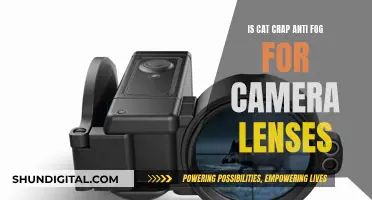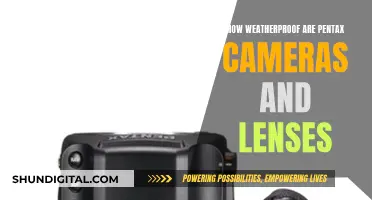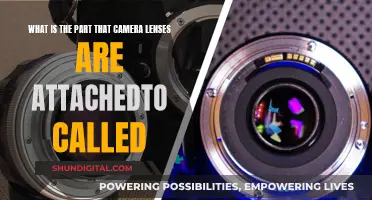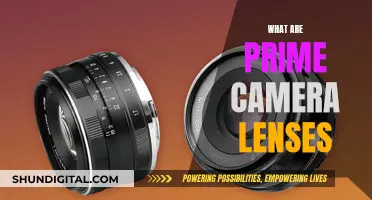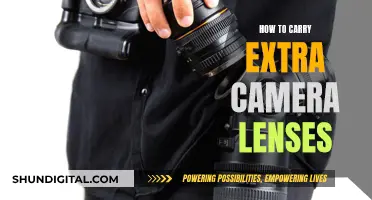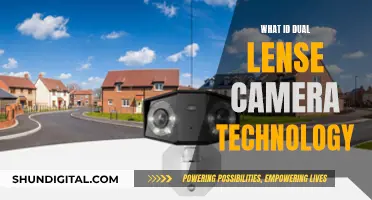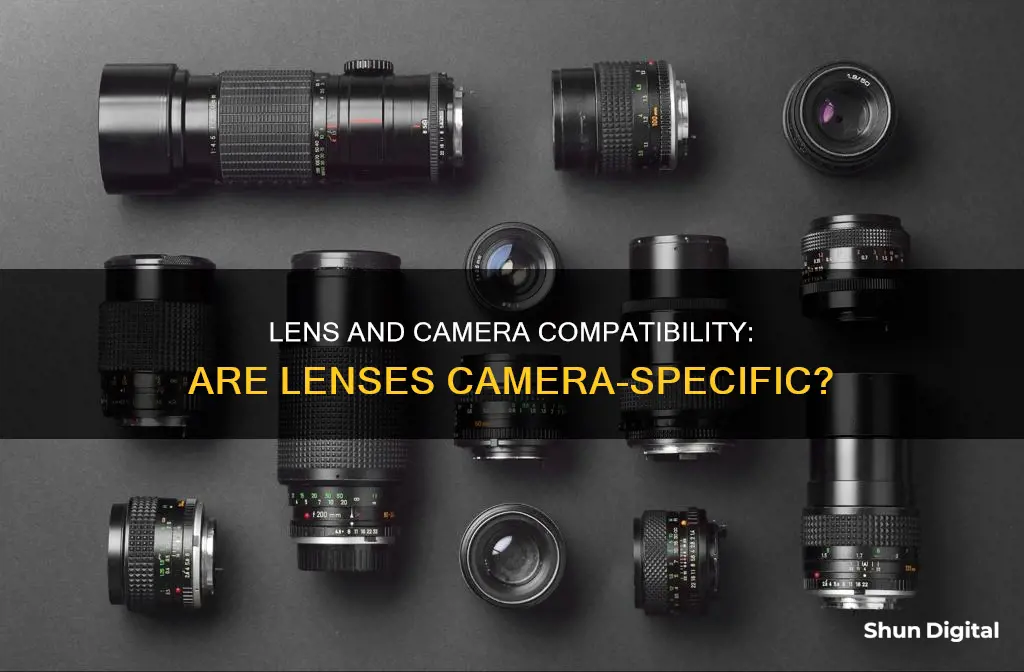
The lenses you can use depend on the type of camera you have and what you want to photograph. Camera lenses are typically brand-specific, with each camera manufacturer using different mounts. This means that a lens from one brand often won't fit a camera from another without an adapter.
There are two broad categories of lenses: prime and zoom. Prime lenses have a fixed focal length and are usually sharper, smaller, lighter, and cheaper than zoom lenses. Zoom lenses, on the other hand, have a variable focal length, allowing you to change your composition by zooming in and out. They are more flexible but tend to be slower and produce lower-quality images than prime lenses.
There are also various types of lenses that fall under these two categories. Standard lenses have a mid-range focal length, usually between 35mm and 85mm, and offer a fairly accurate representation of what the human eye sees. Telephoto lenses have long focal lengths, starting at 85mm, and allow you to photograph subjects from a distance. Wide-angle lenses have a short focal length, commonly ranging from 14mm to 35mm, and give you a wider field of view. Other types of lenses include fish-eye, macro, and tilt-shift lenses.
When choosing a lens, it's important to consider your camera type, budget, and the type of photography you want to do.
| Characteristics | Values |
|---|---|
| Camera compatibility | Depends on the lens mount; Canon EF mount, Nikon F mount, Sony E mount |
| Image quality | Depends on the lens; high-quality lenses can improve image quality |
| Flexibility | Zoom lenses offer more flexibility than prime lenses |
| Focal length | Standard lenses: 35mm-85mm; Telephoto lenses: 85mm and above; Wide-angle lenses: below 40mm |
| Use case | Telephoto: wildlife, sports, and portrait photography; Wide-angle: landscape, architecture, and group photos; Prime: portraits, street, and travel photography |
| Size and weight | Telephoto lenses are heavier and bulkier than prime lenses |
| Budget | Lenses vary in price; older models can offer good quality at a lower cost |
What You'll Learn

Prime vs Zoom lenses
Overview
Prime and zoom lenses are the two main types of camera lenses. Prime lenses have a fixed focal length, meaning the photographer has to move physically closer or further from the subject to change how much of it is in the frame. Zoom lenses, on the other hand, have a variable focal length, allowing the photographer to change the angle of view by turning a zoom ring.
Prime Lenses
Prime lenses are often cheaper, lighter, and optically superior to zoom lenses. They are also great for low-light photography, as they tend to have wider apertures, which let in more light. However, their fixed focal length means that photographers have to be more deliberate in their composition and may need to move around more to get the desired shot.
Zoom Lenses
Zoom lenses are more versatile and convenient than prime lenses, as they allow photographers to quickly change between different focal lengths without having to move around as much. This makes them ideal for situations where movement is restricted, such as in landscape or wildlife photography. However, zoom lenses tend to be bulkier and more expensive than prime lenses, and may not produce images that are as sharp.
The choice between a prime and a zoom lens depends on the photographer's needs and preferences. Prime lenses are great for photographers who want a lightweight setup and are willing to be more deliberate in their composition. Zoom lenses, on the other hand, offer more versatility and convenience, making them ideal for situations where movement is restricted. Ultimately, both types of lenses have their strengths and weaknesses, and many photographers end up using a combination of both depending on the specific application.
The Ultimate Camera Lenses for Professional Photography
You may want to see also

Lens mounts and brands
A lens mount is the interface between a camera body and a lens. It is a feature of camera systems where the body allows interchangeable lenses, such as single-lens reflex cameras or single-lens mirrorless cameras. Lens mounts are mechanical, and often electrical, and allow for the attachment of lenses designed for that mount.
In the early days of photography, lenses were mechanically attached to cameras without any communication between the two. However, with the advent of automatic metering and autofocus systems, electronic contacts were introduced to both cameras and lenses to enable two-way communication.
Today, most lens mounts are bayonet mounts, which use three to four tabs to lock a lens in place. Bayonet mounts have largely replaced screw-threaded and breech-lock mounts due to their ability to securely lock lenses, ensure tight and precise fits, and facilitate the incorporation of electronic contacts.
Different camera brands have distinct lens mounts, and these mounts are usually incompatible with those of competing manufacturers. Here is a list of some popular camera lens mounts and their respective brands:
- Canon EF, Canon RF, Canon EOS
- Fujifilm X, Fujifilm G
- Leica L, Leica M
- Nikon F, Nikon Z
- Pentax K
- Sony E, Sony A-mount (Alpha Series), Sony E-mount (Mirrorless)
It is important to note that some camera brands, like Nikon, have different lens mounts for their DSLR and mirrorless cameras. Additionally, lens mount adapters are available, allowing lenses from one camera mount to be used on a camera with a different mount. However, these adapters may not always support electronic data transmission and autofocus features.
Lens Compatibility: Understanding Camera Lens Interchangeability
You may want to see also

Adapters and limitations
The use of adapters can be a great way to increase the versatility of your camera setup, allowing you to mix and match different lenses with your camera body. However, there are certain limitations and drawbacks to be aware of when considering the use of lens adapters.
Compatibility
While adapters can provide access to a broader range of lenses, including third-party options, they are limited to lenses compatible with the specific adapter. The adapter must have the correct mount for both the camera body and the lens. This means that, even with an adapter, you are restricted to lenses that have adapters with the correct mount for your camera body.
Functionality
The simplest adapters provide only a physical connection between the camera and lens, meaning that certain features may not work as a result. For example, autofocus and EXIF data may be lost when using a basic adapter. More advanced adapters can provide electrical communication between the camera and lens, as well as incorporating optical elements that influence the photo setup, such as aperture control and autofocus.
Image Quality
Adapters with no optical elements should theoretically not affect image quality. However, they can enhance any flaws in the lens, such as vignetting, and may introduce distortions, chromatic aberrations, and a decrease in sharpness. This is due to the increased distance between the lens and sensor, which can also result in a cropping effect when using a full-frame lens with a cropped camera. This issue is exacerbated when using a smaller format lens with a large sensor camera, resulting in a strong vignetting effect and potentially a circular image.
Speed
Adapters can also impact the speed of the lens and camera setup. A speed booster adapter, for example, can increase the amount of light entering the camera, allowing for faster shutter speeds. However, this also results in a wider aperture, which can be a disadvantage in certain situations.
Creative Limitations
The use of adapters can also limit the types of photography you are able to engage in. For example, the loss of autofocus and other issues with basic adapters can make it difficult to photograph fast-moving subjects, such as sports and wildlife photography.
Cost
While adapters can be an inexpensive way to expand your creative possibilities, they do come at a cost. More advanced adapters with additional features, such as electronic connectivity, can be more expensive. It is important to consider the cost of adapters when planning your camera setup, especially if multiple adapters are required.
Understanding Camera Lens Interchangeability: What You Need to Know
You may want to see also

Standard lenses
The 50mm prime lens, often referred to as the "Nifty Fifty", is the preferred choice among professionals and amateurs alike. It is considered a standard lens that every professional photographer must have in their kit.
While standard lenses used to be very common and were typically sold with SLR cameras, manufacturers now often bundle their cameras with cheap zoom lenses instead. However, standard lenses remain a popular choice among serious amateurs and professionals due to their superior optical quality and versatility.
Motorized Telescoping Lenses: Are They Reliable Camera Companions?
You may want to see also

Telephoto lenses
A telephoto lens is a specific type of long-focus lens used in photography and cinematography. The physical length of the lens is shorter than its focal length. This is achieved by incorporating a special lens group known as a telephoto group, which extends the light path to create a long-focus lens in a shorter overall design.
The depth of field in telephoto lenses is inversely proportional to the focal length, resulting in very narrow focal planes. This makes short telephoto lenses (85mm to 135mm) ideal for portrait photography, as the background appears blurred. They are also useful in other types of photography, offering the ability to capture close-up shots from a significant distance. This feature makes them popular in various fields, including sports, nature, and wildlife photography.
While telephoto lenses offer unique capabilities, they also have some drawbacks. Their size and weight can be cumbersome, and they may be more expensive. Additionally, when using a telephoto lens for landscape photography, it is easy to lose perspective and compositional elements, and atmospheric challenges can cause haze and blur in images.
Overall, telephoto lenses are specialised tools that can be invaluable for specific types of photography, particularly when capturing subjects from a distance.
Renting Camera Lenses: Best Places to Get Them
You may want to see also


